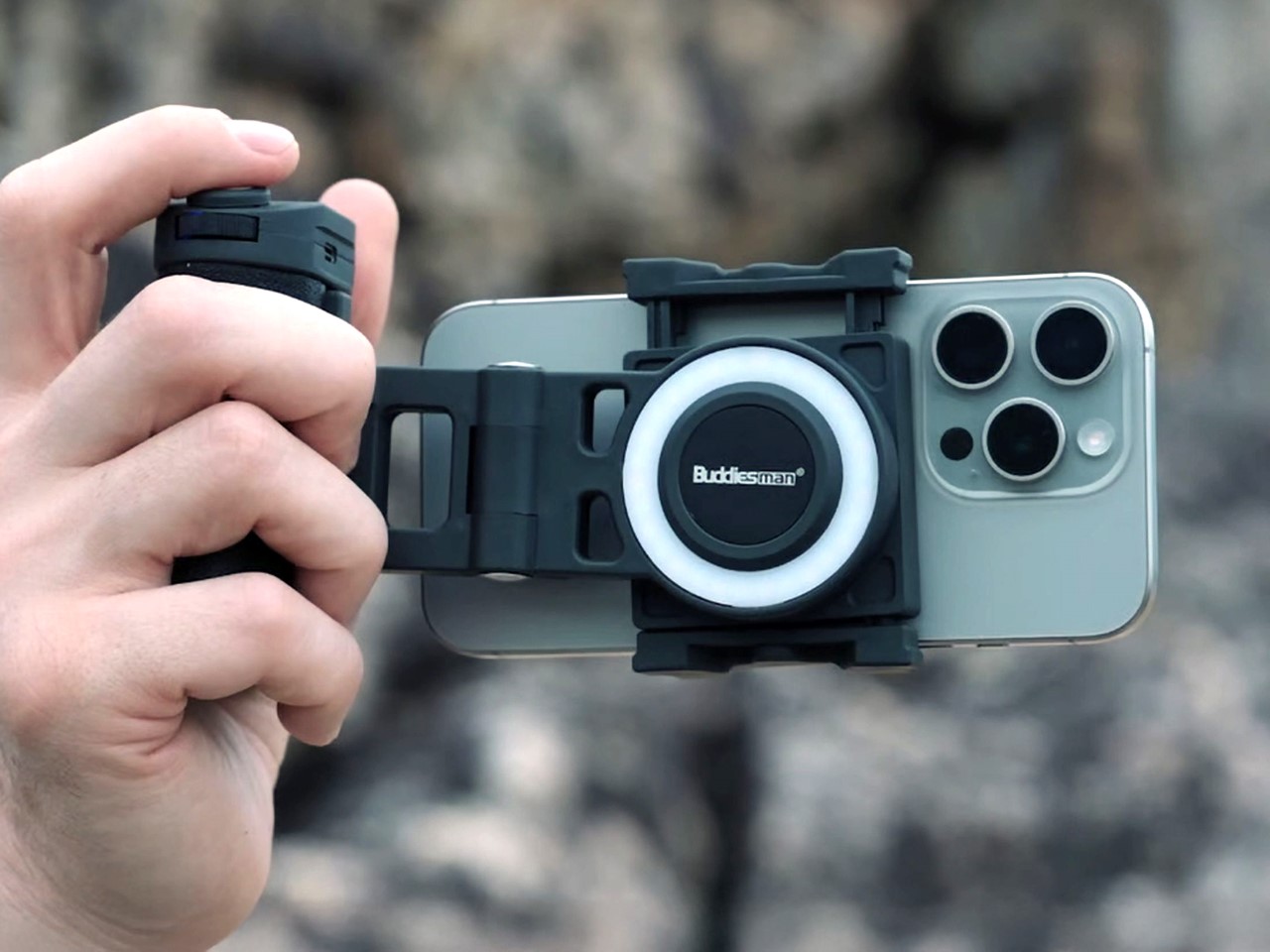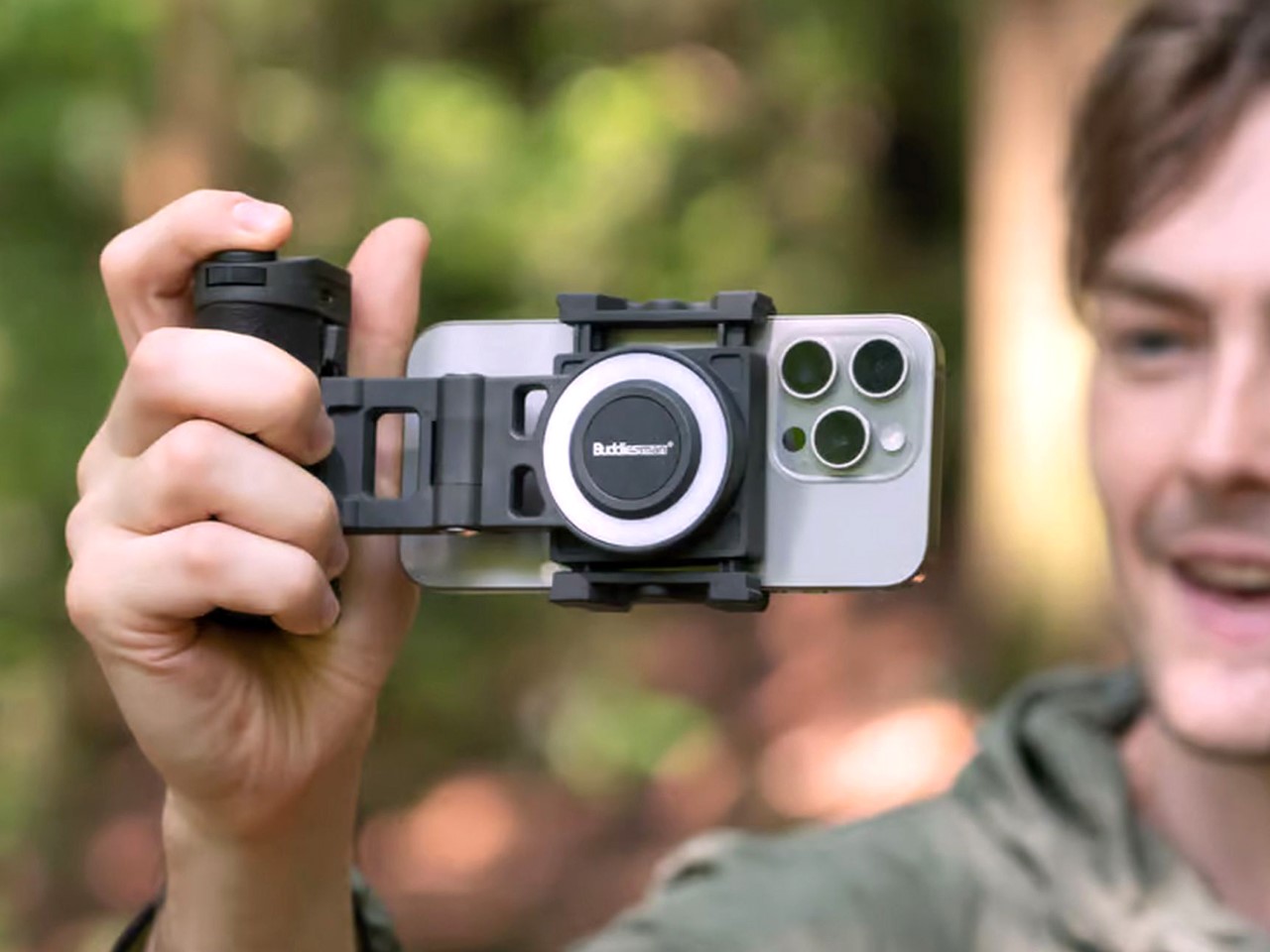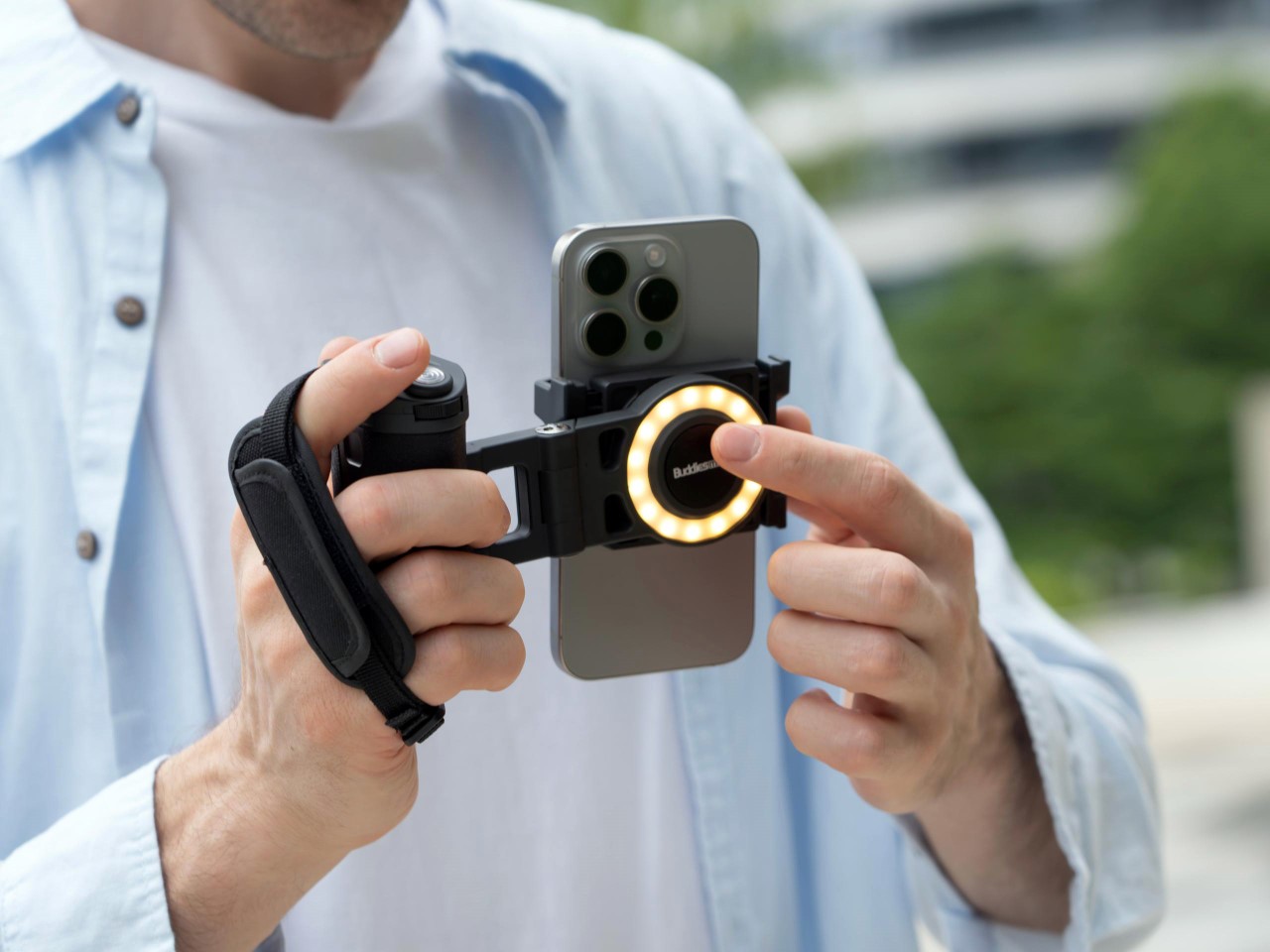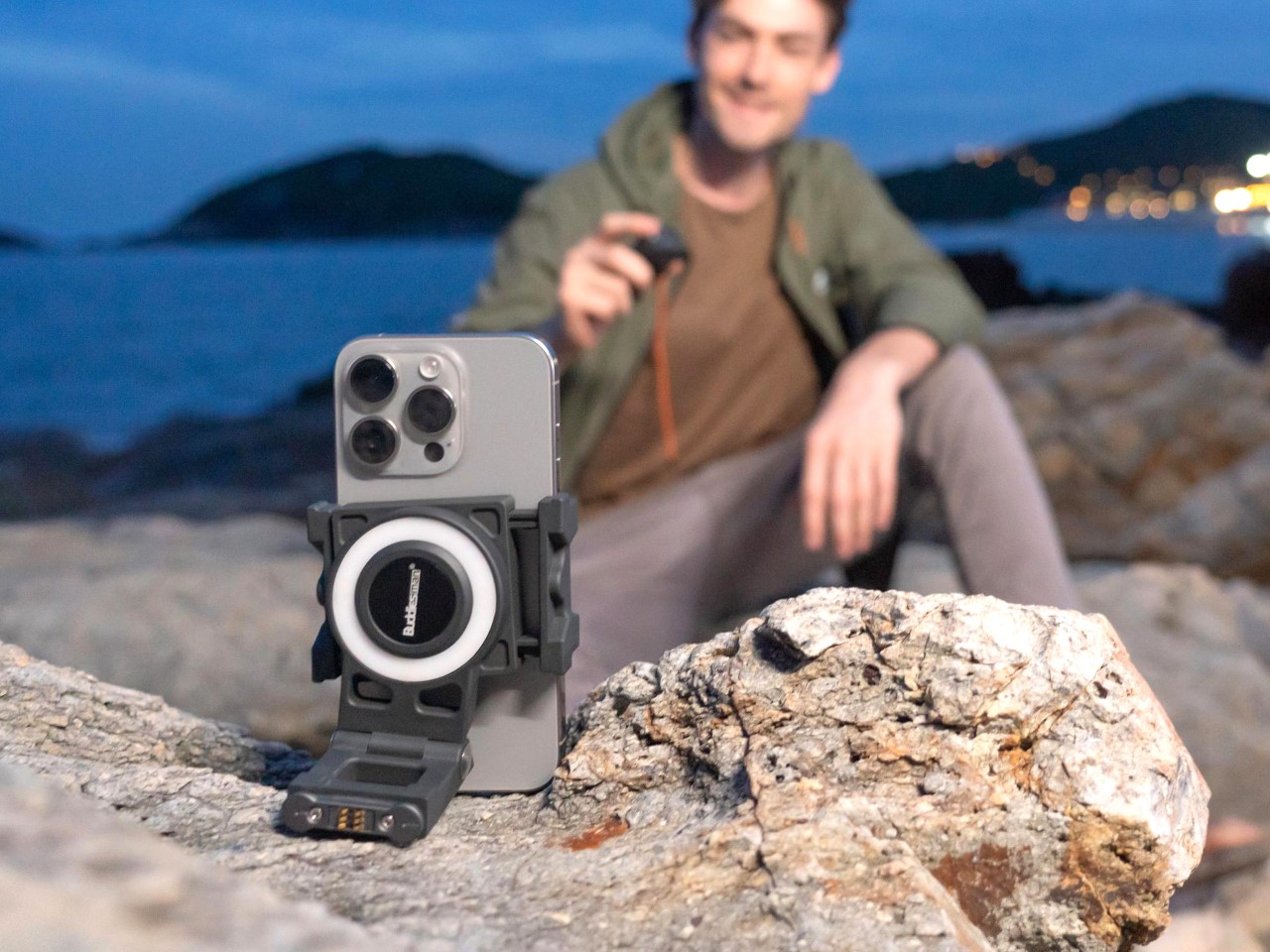A shutter button, a built-in gimbal for landscape and portrait shooting, a zoom wheel, an integrated LED ring light, a tripod setting, and even an external battery pack to boost your phone’s battery. The Snappy offers way more for photography enthusiasts than the iPhone 16 does. It attaches onto any smartphone, giving you a bona fide DSLR-like experience, complete with an ergonomic grip. When you don’t need to shoot content, the Snappy pops right off, turning your handheld camera back into a daily driver smartphone.
Designer: Buddiesman
Click Here to Buy Now: $89 $149 (40% Off) Hurry! Only 21 of 520 left. Raised over $101,000.

Just three weeks ago, Apple debuted the iPhone 16 line-up, adding one crucial new hardware feature to their phones – a Camera Control ‘button’. Designed to help intuitively capture photos without having to fiddle with on-screen controls, the capacitive button lets you perform a variety of actions from zooming, switching between presets, adjusting focal length, or even accessing other key camera features. With the Camera Control, Apple’s reinforced its idea that the smartphone is a great camera first, and then a good mobile device… the only problem is that great cameras are more than just fancy lenses and sensors. Enter the Snappy mobile grip, a device designed to transform the way we take photos on our phones. With its motorized gimbal providing single-axis stabilization, Snappy quickly becomes a trusted companion for anyone tired of blurry images or shaky videos. Unlike larger gimbals such as DJI’s Osmo, Snappy brings stabilization in a small, portable form—making it a solution that fits right into your pocket.

Designed by Buddiesman, a Hong Kong-based manufacturer of photographic gear, Snappy’s centerpiece is its motorized, spring-loaded clamp that securely grips your smartphone. This clamp adjusts easily to accommodate a range of phone sizes, so you won’t have to worry about removing your phone case to make it fit. The ergonomic grip attached to the clamp gives the device a comfortable feel, while an articulated arm allows the phone to be rotated seamlessly between landscape and portrait modes with the flick of a thumbwheel. Powered by a brushless motor, this feature also gives the Snappy stabilizing gimbal-like abilities, ensuring your phone stays level, even during handheld video shoots.

Plug your phone in and it literally feels like a professional camera-mimicking rig for your phone. Use any phone you want with the Snappy and it gives you the added benefit of being able to intuitively capture content the way you would with a more pro-facing device like a DSLR or mirrorless camera. A shutter button on the top lets you easily take photos and record videos without fumbling to touch the screen or hit a volume button to take the shot (like you would with most smartphones). The grip feels instantaneously comfortable, allowing you to point and shoot with a single hand. Worried you’ll accidentally drop your phone? The Snappy has a built-in strap that lets you secure it to your hand too, so even the largest, heaviest of phones don’t put too much strain on that wrist of yours.


If there’s something a photographer hates more than phone cameras, it’s the flashlight on phone cameras. The flashlight is way too coarse, and no self-respecting photographer uses it unless absolutely necessary. To fix that, the Snappy comes with its own multi-LED built-in ring light. Located just beside the phone’s lenses (where you’d expect the MagSafe ring to line up), users can toggle between cool and warm light settings simply by tapping the touch-sensitive zone inside the ring, adjusting brightness to get the perfect shot regardless of the lighting conditions. This feature is perfect for low-light environments where smartphone cameras traditionally struggle.


For even greater flexibility, Snappy allows users to detach the grip from the main body, turning it into a wireless remote. With a range of up to 10 meters (33 feet), you can take photos and videos from a distance, offering a new level of creativity and control in framing your shots. With the remote detached (or even with the remote unit still on), the Snappy can be used as a tripod of sorts, propping your phone up so you don’t need to hold it in your hands. Perfect for using as a phone stand while reviewing the footage you’ve shot, or propping your phone up to take a remote video/photo while you stand away from your camera, this feature gives the Snappy one remarkable ability that neither phones nor DSLR cameras have, barring actually buying a tripod of course. And just in case you’re a tripod purist, the Snappy has a tripod mount too. Want to add accessories to your smartphone camera? The Snappy also includes a cold shoe mount for attaching additional peripherals like microphones or even external lights just in case the ring light on the device isn’t enough.


The Snappy relies on a built-in battery that powers this entire experience. Although the battery’s capacity (and use time) is a bit of a mystery, the folks at Buddiesman tout that the Snappy can transform into a power bank for your smartphone when you’re running low on juice. Just connect your phone to the Snappy’s charging port via a USB-C cable and it instantly begins recharging your phone, giving you the benefit of a gimbal that also enhances your phone’s battery life along with its camera capabilities.

Currently available on Kickstarter, early adopters can secure a Snappy with a pledge of $89, while the retail price is set to be $149 once it hits the market. The $89 kit includes the Snappy itself, although you can upgrade to a bundle that also includes an add-on tripod and an external light that mounts into the Snappy’s cold shoe adapter. With its combination of user-friendly design and professional-grade features, Snappy could very well bridge the gap between smartphones and traditional cameras, bringing the best of both worlds to your pocket. They say the best camera is the one that’s in your pocket. No matter whether it’s the Google Pixel, a Samsung Galaxy, or even older variants of the iPhone, the Snappy turns your phone’s camera into a makeshift pro-grade shooter that’s perfect for turning average photos and videos into polished content.
Click Here to Buy Now: $89 $149 (40% Off) Hurry! Only 21 of 520 left. Raised over $101,000.
The post Forget the iPhone 16 Camera Control, this Gimbal Attachment gives any smartphone a DSLR experience first appeared on Yanko Design.
![]()
![]()
![]()
![]()
![]()
![]()
![]()
![]()
![]()
![]()
![]()
![]()









